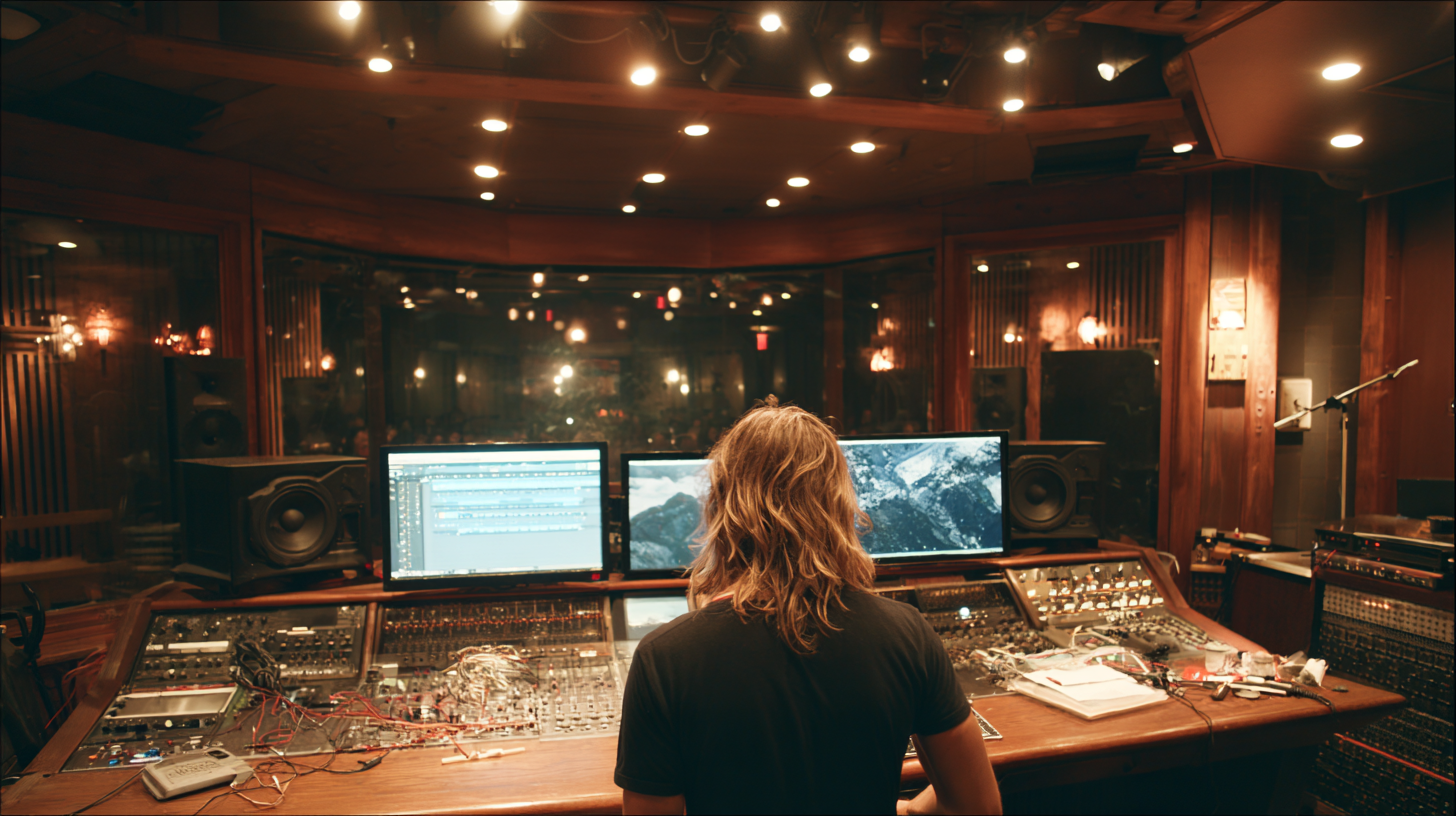
The Story So Far’s ‘Light Year’: A Deep Dive Into Sam Pura’s Production
Nail The Mix Staff
The Story So Far has a knack for writing punk rock anthems that are deceptively complex. What sounds like raw, straightforward energy is often built on an incredible amount of detail and production foresight. Case in point: their track “Light Year,” produced by the legendary Sam Pura.
When you crack open the multi-track session for this song, it’s not just a recording; it’s a complete roadmap. Sam Pura didn’t just capture a great performance; he crafted a sonic journey where the very texture of the instruments evolves with the song’s structure. Let’s pull back the curtain and look at the raw tracks to see how this incredibly dense and dynamic production was built from the ground up.
Building a Massive Drum Sound from the Source
Right off the bat, you notice something cool: there are two distinct groups of drum tracks. This isn’t just a backup; it’s by design. The session features two entirely different drum kits, likely used for different sections of the song to create a powerful sonic shift without ever touching a plugin. This dedication to getting the sound right at the source is a theme you’ll see throughout this entire session.
A Universe of Room Mics
Great drum sounds live and die by their ambience, and this session provides a masterclass in using room mics. Forget a simple stereo pair. For the first kit alone, we get:
- A Close Room: This mic is perfectly balanced, capturing a fantastic, punchy image of the whole kit. It’s got the detail of the shells and the sizzle of the cymbals in one track.
- A Hallway Room: This is where you get the big, explosive ambience. It’s the perfect track to slam with compression and blend underneath for that larger-than-life sound.
- Three Mono Rooms: This is where the surgical precision comes in. Each mono mic was strategically placed to capture a specific element. One mono room, for instance, has this incredible slap and attack on the kick drum that isn’t as prominent in the close mics. Want more kick-slap without reaching for an EQ? Just bring up that mic. These uniquely placed mics give you an arsenal of textures to add punch, space, and character.
Killer Shells, No Samples Needed
With so much focus on the rooms, it would be easy to overlook the close mics, but they are absolutely stellar. The kick in and kick out are powerful and full of energy, and the snare has all the body and crack you could ask for. There’s nothing missing. This is one of those rare sessions where you can confidently say you don’t need to even think about drum samples. Everything you need to craft a world-class drum mix is right here in the raw audio.
Evolving Tones: Bass and Guitars That Morph
Here’s where the production starts to feel less like recording and more like sound design. Instead of one static guitar tone and one bass tone for the whole song, the sounds themselves change to match the song’s emotional arc. This isn’t about automation in the mix; it’s about fundamentally different source tones.
Not Just One Bass Tone
The bass rig is a perfect example. We’ve got multiple tracks to work with:
- A clean DI track fed through a Darkglass pedal for grit.
- A separate DI track running through a compressor.
- Two distinct bass amp tracks.
And what’s more, there are completely different bass performances with different tones for different sections. This gives the song a dynamic lift that goes beyond just playing louder. When a new section kicks in, the entire sonic footprint of the low end can shift, making the arrangement feel more alive and intentional.
The 8-Mic Guitars and Layering A-Plenty
Hold onto your hats, because the guitar production is next-level. You’ll see stereo guitar tracks in the session, but these are no ordinary left/right recordings. It’s believed that each of these “stereo” tracks is actually a submix of eight different microphones on a single cabinet, all summed down. The amount of work that went into just dialing in one guitar sound is immense.
Just like the bass and drums, the guitar arrangement is constantly morphing:
- Dynamic Layering: The song might start with a core set of guitars, but as it builds into the verse, new doubles enter. When the pre-chorus hits, it sounds like an entirely new amp or combination of amps is introduced to lift the energy.
- Textural Orchestra: It’s not just about standard rhythm guitars. You’ll find incredible layers like “Back Mask” tracks (which sound like reverse effects) and subtle acoustic guitars (labeled “AC”). This creates a lush, almost orchestral bed of guitars reminiscent of the complex arrangements of ’90s bands like Radiohead.
This isn’t just quad-tracking; it’s a carefully constructed sonic sculpture that evolves from moment to moment.
Vocals and Percussion: The Final Layers of Detail
The meticulous layering continues with the final elements of the song, ensuring every piece of the arrangement serves the whole.
Percussion as a Rhythmic Engine
You’ll find shaker and tambourine tracks running for nearly the entire song. This might seem like a lot, but they’re not just ear candy. When you listen to them with the drums, they seamlessly integrate, becoming another limb of the kit. The tambourine subtly highlights the snare, and the shaker provides a constant “motor” that adds movement and excitement, especially in the grooves. It’s a brilliant-yet-simple way to add energy without cluttering the mix.
A Vocal Arrangement That Follows Suit
The vocal production perfectly mirrors the instrumental approach. It’s a deep stack of:
- A main vocal
- A main double
- Stereo doubles
- Low vocals
- Harmonies
As the song moves from a verse to a pre-chorus and into a full-blown chorus, these layers are introduced and manipulated. The arrival of the low vocals and harmonies coincides perfectly with the introduction of new guitar layers, ensuring that the entire production swells and recedes as one cohesive unit. It’s a masterclass in arranging a song where every part is locked into the same dynamic vision.
The Takeaway: Production is the Map
The “Light Year” multi-track session is more than just a collection of files; it’s a blueprint. Sam Pura provided a map that guides the mix, where the sonic evolution is baked into the very fabric of the recording. This is the difference between simply recording a band and truly producing a track. Understanding this approach is a crucial part of learning how to mix music at a professional level.
The Story So Far on Nail The Mix
Sam Pura mixes "Light Year"
Get the Session
Learning to dial in tones with detailed EQ strategies and compression is vital, but seeing how those decisions are set up by a world-class producer is an education you can’t get anywhere else.
Want to get your hands on these incredible multi-tracks and watch Sam Pura himself explain his process and mix this beast from scratch? At Nail The Mix, we give you the raw files from massive songs and let you watch the original producers build the final mix, explaining every decision along the way.
Get access to The Story So Far ‘Light Year’ session now and see firsthand how a pro navigates a session this complex. Dive in, interpret the map, and nail the mix.
Get a new set of multi-tracks every month from a world-class artist, a livestream with the producer who mixed it, 100+ tutorials, our exclusive plugins and more
Get Started for $1





